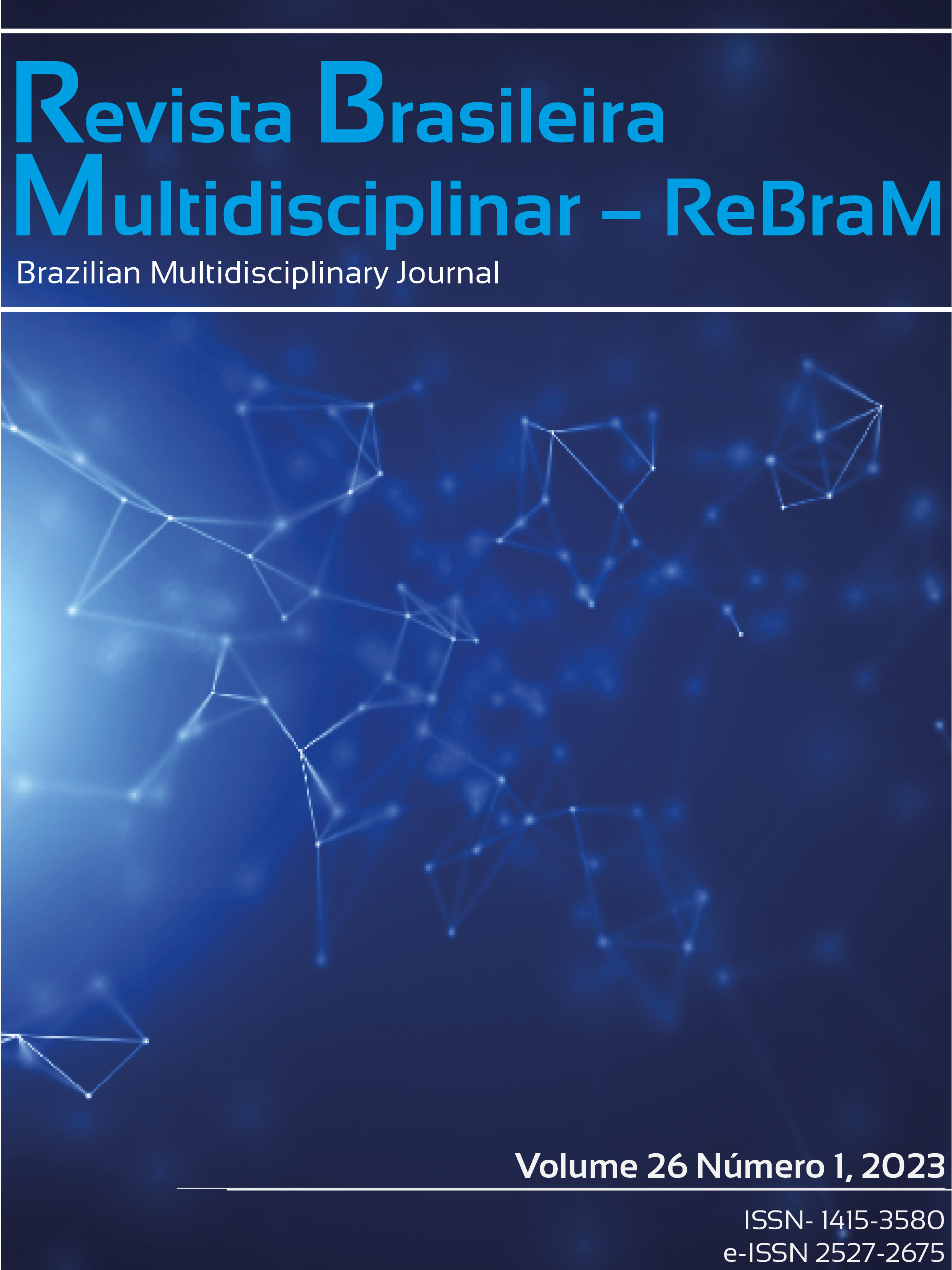Leishmaniose mucocutânea em paciente com antecedente de infecção disseminada: relato de caso
Main Article Content
Abstract
As leishmanioses constituem um conjunto de síndromes clínicas causadas pelas diversas espécies do parasita intracelular obrigatório do gênero Leishmania. Trata-se de uma zoonose transmitida por insetos-vetores do gênero Lutzomyia, a reservatórios naturais, representados por um conjunto de animais silvestres e domésticos. A doença tem registro anual de 1 a 1,5 milhão de casos e com cerca de 350 milhões de pessoas habitando áreas risco para transmissão ativa do parasita. O Brasil ganha destaque no cenário da doença na América Latina; os casos estão distribuídos em todo território nacional, sendo as regiões Norte e Nordeste do país as mais afetadas. A Leishmaniose mucocutânea ou mucosa (LM) é uma entidade rara, potencialmente grave e de grande morbidade. Usualmente costuma-se observar lesões de mucosa em pacientes que foram afetados pela forma exclusivamente cutânea da doença. A doença é caracterizada por lesões envolvendo, principalmente, superfícies mucosas do nariz e oral, com ou sem perfuração de septo nasal. Em 90% dos casos de lesão na mucosa nasal, apenas o septo nasal anterior é afetado. Além de que, apresentações clinicamente atípicas não são infrequentes tendo em vista que diversos fatores relacionados ao parasita, ao hospedeiro e à resposta imunológica são relevantes para a lesão de mucosa. O presente trabalho, objetiva relatar um caso de leishmaniose cutânea com provável evolução subclínica e reativação tardia sob a forma de LM.
Downloads
Article Details

This work is licensed under a Creative Commons Attribution 4.0 International License.
• The author (s) warrant that the contribution is original and unpublished and that it is not in the process of being evaluated in other journal (s);
• The journal is not responsible for the opinions, ideas and concepts issued in the texts, as they are the sole responsibility of the author (s);
• Publishers have the right to make textual adjustments and to adapt the article to the rules of publication.
Authors retain the copyright and grant the journal the right of first publication, with the work simultaneously licensed under the Creative Commons Attribution License, which allows the sharing of work with acknowledgment of authorship and initial publication in this journal.
Authors are authorized to take additional contracts separately, for non-exclusive distribution of the version of the work published in this journal (eg publish in institutional repository or as book chapter), with acknowledgment of authorship and initial publication in this journal.
Authors are allowed and encouraged to publish and distribute their work online (eg in institutional repositories or on their personal page) at any point before or during the editorial process, as this can generate productive changes as well as increase the impact and citation of the published work (See The Effect of Free Access) at http://opcit.eprints.org/oacitation-biblio.html
References
ABADÍAS-GRANADO I, DIAGO A, CERRO PA, PALMA-RUIZ AM, GILABERTE Y. Cutaneous and Mucocutaneous Leishmaniasis. Actas Dermo-Sifiliográficas. 112(7), 601–618. 2021
BACELLAR O, LESSA H, SCHRIEFER A, MACHADO P, RIBEIRO AJ, DUTRA WO, GOLLOB KJ, CARVALHO EM. Up-regulation of Th1-type responses in mucosal leishmaniasis patients. Infection and Immunity, Washington, v. 70, n. 12, p. 6734-6740, 2002.
BRASIL; MINISTÉRIO DA SÁUDE; SECRETARIA DE VIGILÂNCIA EM SAÚDE; DEPARTAMENTO DE VIGILÂNCIA DAS DOENÇAS TRANSMISSÍVEIS. Manual de vigilância da leishmaniose tegumentar. Brasília, 2017. 189 p.
BRITO MEF; ANDRADE MS; DANTAS-TORRES F; RODRIGUES EHG; CAVALCANTI MP; ALMEIDA AMP; BRANDRÃO-FILHO SP. Cutaneous leishmaniasis in northeastern Brazil: a critical appraisal of studies conducted in State of Pernambuco." Revista da Sociedade Brasileira de Medicina Tropical vol. 45.4, p. 425-429, 2012
BRITO MEF; SILVA CJ; SILVA CM; SALAZAR PR; COUTINHO JS; REIS LC; PEREIRA VRA; BRANDRÃO-FILHO SP; MEDEIROS ACR. Clinical epidemiological profile of American tegumentary leishmaniasis at the Pinto Sugar Mill in Moreno Municipality, Greater Metropolitan Recife, Pernambuco State, Brazil. Cadernos de Saúde Pública, 2008.
ITO MM; CATANHÊDE LM; KARSURAGAWA TH; JUNIOR CFS; CAMARGO LMA; MATTOS RG; VILA-LLOBOS JMS. Correlation between presence of Leishmania RNA virus 1 and clinical characteristics of nasal mucosal leishmaniosis, Brazilian Journal of Otorhinolaryngology. Volume 81, Issue 5, 2015.
GUERRA JAO; PRESTES SR; SILVEIRA H; COELHO LI; GAMA P; MOURA A; AMATO V; BARBOSA MGV; FERREIRA LCL. Mucosal Leishmaniasis caused by Leishmania (Viannia) braziliensis and Leishmania (Viannia) guyanensis in the Brazilian Amazon. PLoS Neglected Tropical Diseases 5 (3), e980. 2011.
MEIRELES CB; MAIA LC; SOARES GC; TEODORO IP; GADELHA MS; SILVA CGL; LIMA MAP. Atypical presentations of cutaneous leishmaniasis: a systematic review. Acta Tropica . vol. 172, p. 240-254, 2017.
MIRANDA ML; LESSA HÁ; CASTRO TWN; OLIVEIRA A; SCHERIFER; MACHADO P; CARVALHO EM. Mucosal leishmaniasis: epidemiological and clinical aspects. Brazilian Journal of Otorhinolaryngology, 73(6), 843–847. 2007.
PINART M; RUEDA JR; ROMERO GAS, PINZÓN-FLÓREZ CE, OSORIO-ARANGO K, Silveira MAIA-ELKHOURY AN, REVEIZ L, ELIAS VM, TWEED JA. Interventions for American cutaneous and mucocutaneous leishmaniasis. Cochrane Database of Systematic Reviews 8, 2020.
RODRIGUES E.H.G; BRITO MEF; MENDONÇA MV; WERKHAUSER RP; COUTINHO EM; SOUZA WV; ALBUQUERQUE MFM; JARDIM ML; ABATH FG. Evaluation of PCR for diagnosis of american cutaneous leishmaniasis in a area of endemicity in northeastern Brazil. Journal of clinical microbiology. Washington. v. 40, n. 10, p. 3572-3576, 2002.
ROJAS-JAIMES J, FRISCHTAK HL, ARENAS J, LESCANO AG. Case Report: Mucosal Leishmaniasis Presenting with Nasal Septum Perforation after Almost Thirty Years. American Journal of Tropical Medicine and Hygiene. 99(2):327-330 2018.
SANTOS MES; NOGUEIRA EFC; LOPES OS; TORRES BCA. Facial mucocutaneous leishmaniasis: challenges from diagnosis to treatment. Revista de Cirurgia e Traumatologia Buco-maxilo-facial. vol.13 no.2, 2013.
SCHWARTZ E; HATZ C; BLUM J. New world cutaneous leishmaniasis in travelers.Lancet Infectious Diseases. v. 6, p. 342–349, 2006.
TIRELLI F; VERNAL S; ROSELINO AM. Final diagnosis of 86 cases included in differential diagnosis of American tegumentary leishmaniasis in a Brazilian sample: a retrospective cross-sectional study. Anais Brasileiros de Dermatologia. 92 (5), 2017.
WILSON, S. M. DNA-based methods in the detection of Leishmania parasites: Fields applications and practicalities. Annals of Tropical Medicine and Parasitology, Liverpool, v. 89, n. 1, p. 95-100, 1995.





